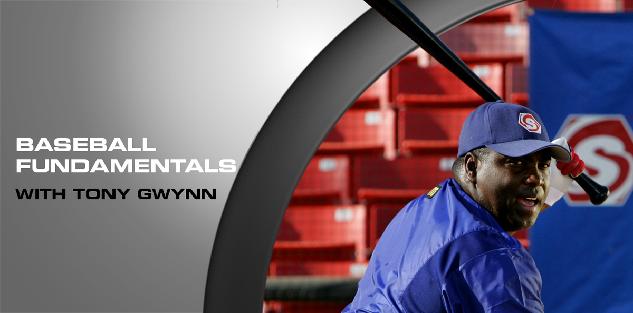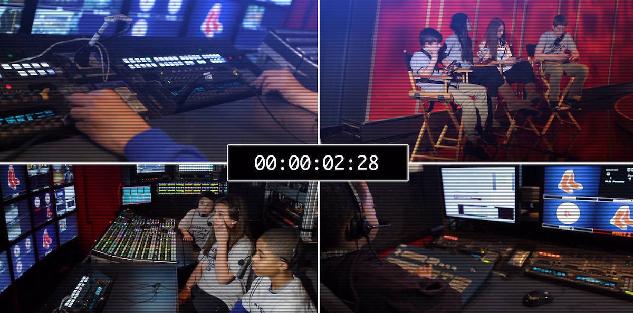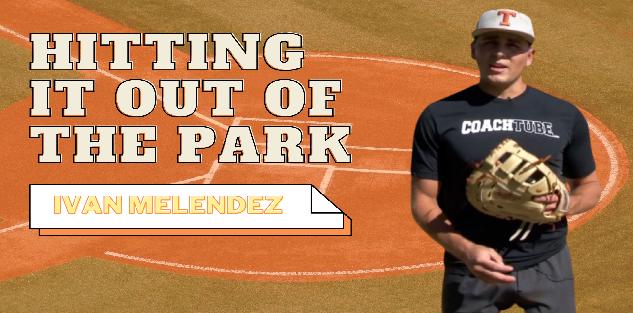Featured courses
- Understanding The Shift by Brandon Ogle
- Two Drills to Improve Outfield Movement and Communication by Grant Young
- The Ultimate Resource For Coaching Youth Baseball by Jackson Chlebowy
- Become a Master at Bunting by Brandon Ogle
- 5 Reasons Why There Is More To Good Base Running Than Just Speed by Brandon Ogle
- Three Injury-Prevention Tips For Your Offseason Pitching Program by Grant Young
- How to Teach Hitting to the Next Generation by Grant Young
- Developing Defensive-Minded Baseball Catchers by Grant Young
- 3 Baserunning Tips to Score More Runs in Baseball by Grant Young
- 5 Outfield Drills to Work on in Season by Alec Burris
- Keys For Scoring More With Runners on First and Third Base by Grant Young
- How to Develop Your Game to Become a Five-Tool Player by Brandon Ogle
- 3 Coaches Share the Keys to Running Baseball Practice the Right Way by Grant Young
- Four Drills to Sharpen a Baseball Hitter’s Vision at the Plate by Grant Young
- Four Quotes to Hit Better With Two-Strikes by Grant Young
- Four of Former MLB Pitcher Juan Nieves’ Movement-Based Pitching Drills by Grant Young
- Two Tips For Developing an Elite Baseball Bullpen by Grant Young
- Overcoming the Four Challenges of Indoor Baseball Practices Because of Weather by Grant Young
- Three Tips to Make Your Baseball Team Mentally Tougher by Grant Young
- Three Priceless Philosophies to Motivate Your Baseball Team by Grant Young
- Three Offseason Baseball Drills to Simulate Competition by Grant Young
- Three Baseball Offseason Strength and Conditioning Essentials by Grant Young
- Important Ways to Improve Your Baseball Team’s Baserunning by Grant Young
- Three Ways to Perfect Hitting Mechanics From an MLB Icon by Grant Young
- Catchers can influence pitchers...for bad or good by Drew Johnson
- Throwing Strikes and Playing Good Defense Equals Wins by Jose Ortiz
- Legendary Indiana Head Baseball Coach Bob Morgan’s Offensive Theory by Grant Young
- Tennessee Head Baseball Coach Tony Vitello on How to Practice Baserunning by Grant Young
- Three Great T-Ball Drills For Youth Baseball Players by Grant Young
- How to Manage a Baseball Pitching Staff by Grant Young
- Three Uncommon Tips to Become a Better Hitter by Grant Young
- How a Baseball Coach Can Develop Strike Throwers by Grant Young
- Drills to Develop Elite Baseball Outfielders by Grant Young
- Baseball Training Exercises to Strengthen Arm and Bat Speed by Grant Young
- How to Use Bunting to Score More Runs by Grant Young
- How To Build An Elite Baseball Infielder by Grant Young
- Three Drills to Improve Your Baseball Team's Infield Play by Grant Young
- Three Keys to Curating a Pitching Staff’s Success by Grant Young
- 3 Techniques to Develop a Baseball Player’s Hitting Approach by Grant Young
- How to Cultivate Confidence Within Your Pitchers by Grant Young
- 5 Every Day Drills To Help You Become A Better Catcher by tyler Linderman
- How to Throw A Curveball by Brandon Ogle
- How to Assemble a Lock-Down Bullpen by Brandon Ogle
- How to Throw a Sinker by Brandon Ogle
- How to be a Smart Baserunner by Brandon Ogle
- Improving a player's slugging average by Phillip Woolgar
- The 8 Fundamentals of Pitching by Drew Johnson
- How to Throw a Deceiving Changeup by Brandon Ogle
- Step Up Your Outfield Defense With These Three Drills by Jose Ortiz
- 8 Baseball Drills Every Player Should Practice by Drew Johnson
- How To Become An Elite Defensive Outfielder by Tyler Linderman
- 5 Tips For Crushing A Curveball by Johnny Grassi
- LEGENDS FOR YOUTH INCLUSION BASEBALL CLINIC by Phil
- Fourteen Ways To Turn A .300 Hitter Into A .210 Hitter by Jay P. Granat, Ph.D.
- How To Become The Ideal Leadoff Man by Brandon Ogle

Drills to Develop Elite Baseball Outfielders
- By Grant Young
Very few youth baseball players want to play the outfield. They would rather play shortstop (because shortstops receive all the glory), pitcher (because pitchers are standing in the middle of the field with the ball in their hand), or even catcher (because catchers always get to be a part of the action).
In fact, a common conception about the outfield in youth baseball is that it’s a place to hide a team’s most sub-par defenders.
But that could not be any different from the truth when it comes to the sport’s upper levels.
The three outfield spots are perhaps the most sought-after positions in the high school and professional levels. They are much less stress-inducing than anything closer to home plate, and allow the fielder to play reactively, which is the purest (and most enjoyable) playing experience).
This is not to say that playing outfield is easy, or can’t be taught. It can actually be one of the trickiest positions to coach because so much relies on instinct.
Hence why it pays to have access to knowledge from coaches like Darren Fenster.
Coach Fenster is currently an assistant coach at the University of Miami, who specializes in working with outfielders. Prior to his time at Miami, Coach Fenster spent 12 years with the Boston Red Sox. During his time with the organization, Fenster groomed the next crop of major-league stars, working as the minor-league infield coordinator and minor-league outfield and base running coordinator.
Fenster has also worked with the United States National Baseball Team since 2021. He was named a coach for Team USA during the club’s final efforts to qualify for the Tokyo Summer Olympics and was the third-base coach for the Olympics, helping the U.S. claim the silver medal.
As a player, Coach Fenster was selected in the 12th round of the 2000 MLB Draft by the Kansas City Royals and played five seasons in the Royals’ farm system.
Few coaches have the wealth of experience and knowledge that Coach Fenster has about the outfield. Hence why his ‘Isolating the Outfielder’ course is an excellent resource for any outfield coach to not only develop their players but also get them attuned to and excited about the many benefits of playing outfield in baseball’s higher levels.
Throw
One of the biggest stigmas around outfield (and all of baseball) that Coach Fenster is on a mission to end is that playing catch at the beginning of practice is nothing more than a means of loosening up the arm.
This sentiment drives Coach Fenster insane, because he knows that not making catch play more intentional is a massive detriment to outfielder development. He believes that play catch should be treated with the same intensity and focus as any other defensive drill during practice. Players should be aiming for a specific target on their opponent’s body (whether it be their hat, the logo on the chest, or their belt line) and strive to hit that target with every single throw. Not only will this hone their throwing accuracy, but it will ensure that stay focused instead of merely going through the motions.
Coach Fenster also suggests having outfielders take ground balls on the infield during specific parts of practice, such as during a round or two of batting practice. The reason for this is that it will speed the outfielder up, getting them used to having to deal with maximum speed of a ground ball. Getting them acclimated to this will make fielding ground balls in the outfield much more smooth and simple.
Tapbacks
A favorite daily drill that Coach Fenster swears by when it comes to developing outfielders is what he calls the Tapback drill.
This drill is extremely simple. The outfielder will get on their knees, and a coach will be standing about five feet in front of them, holding a ball. From here, the coach will begin throwing a ball to the grass inches in front of the outfielder’s glove hand (although they aren’t wearing a glove). The outfielder’s job is to tap the baseball right back to their coach, keeping the ball’s trajectory in a straight line.
As soon as the coach receives the ball back, they’ll toss another ball in the same position, and the outfielder will repeat.
The benefit of this drill is that it will ensure the outfielder will get a feel of their hand working through the ball with their fingers down.
About 20-30 repetitions of this drill, Coach Fenster advises doing the same thing but while the outfielder wears a glove. This is the perfect drill to kickstart one’s daily practice or pregame fielding routine.
Eyes Behind Straight On and Glove Side
Another outfield drill that Coach Fenster highly recommends is what he calls the Eyes Behind Straight on and Glove Side drill.
This drill is another simple yet effective way to get a player prepared to play outfield. All it requires is that the player get in their ready position in the outfield with their coach about 15 feet in front of them with a ball. From there, the coach will simply toss the ball up in the air while the outfielder positions themself under it.
The important point here is that the player makes sure to catch the ball moving forward, and practices making a quick and smooth transition with the ball from their glove to their throwing hand.
While all of these drills are simple, the point is that playing outfield is actually quite simple. All it takes is focus, consistency, and attention to detail in order to become a good outfielder. And sticking to these daily routines is the perfect way to build a foundation for any outfielder’s future.



